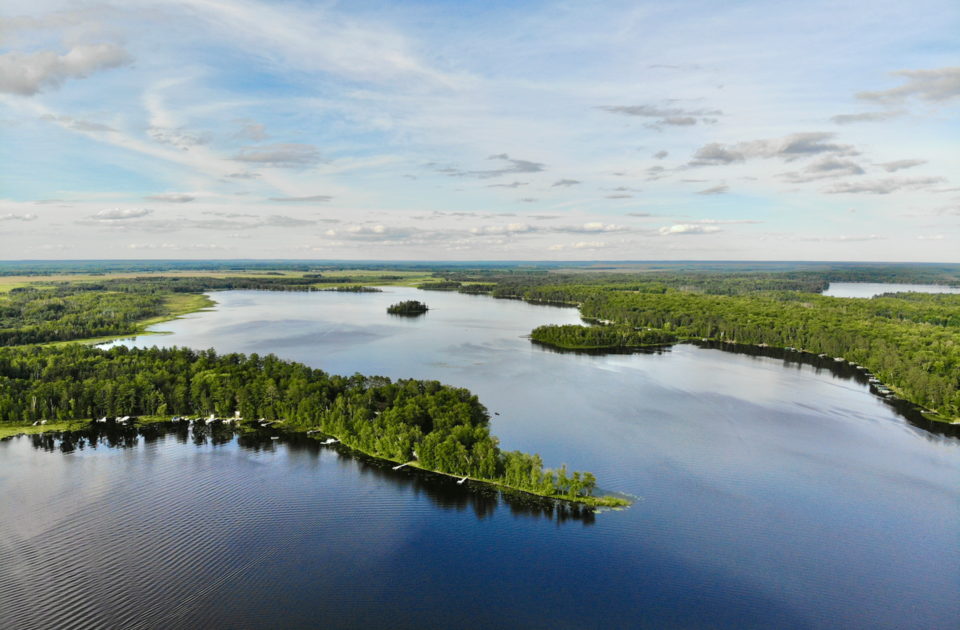
Creating a loon sanctuary
Gun Lake is a part of the MN Loon Restoration Project, a DNR program designed to reduce
mortality and increase the number of young loons produced. Minnesota is home to about 12,000 adult loons; the highest in the lower 48 states. Although their numbers remain stable in Minnesota, this
project was developed to restore natural resources impacted by the 2010 Deepwater Horizon oil spill that injured many kinds of wildlife, including migratory birds like loons.
Here's how Gun Lake is involved in the Project along with ways you can help. The project is focused on:
- Enhancing loon productivity with Artificial Nesting Platforms (ANP). The water-level fluctuations on Gun Lake make it an ideal place for ANPs. We deployed two platforms within two weeks of ice out in 2023.
- Engaging in loon conservation activities like our loon watch program lead by Joe & Janet Pipp. We're seeking additional volunteers (particularly on the west side of Gun Lake) to report loon sightings, locations and if there are any chicks to the Pipps. If you can help, please reach out to Joe Pipp.
- Reducing loon exposure to lead-based fishing tackle. Loons eat fish ingested with tackle or scoop up lost lead sinkers at the bottom of lakes when gathering pebbles to aid in their digestion. One lead sinker will kill a loon, and one in five loons dies a slow and painful death of lead poisoning from fishing tackle. Lead also poisons eagles, swans and some mammals. Follow the tips below to help and learn more here.
- Find lead-free fishing tackle - here's a manufacturer's directory
- Don't throw old fishing gear into the water or shore.
- Properly dispose of unwanted lead tackle.
- Wash your hands after handling lead sinkers or cleaning out your tackle box.
- Spread the word. Tell your friends about the problem. Encourage them to switch to lead-free sinkers and jigs.
Steer clear of loons
Gun Lake is home to several pairs of loons who migrate to our lake each year. Be aware that if you see a loon from mid-June to September, chances are that one or two chicks will be close by. Keep your distance. Also, if you approach a loon and hear it start to call or if you see it “dancing” straight up out of the water and slapping with its wings, this means you are too close and it is alarmed by your presence. Harassment of wildlife is against the law. If you see loons being harassed, report it to your local DNR office. Videotaping the event and/or recording the vessel’s registration number is helpful.
One of the best things you can do to encourage loon nesting is to restore your shoreline to a natural state. This would include planting native lakeshore vegetation. Not only does this provide loons with potential nesting habitat, but it also improves habitat for fish species (loons main food source) and also helps improve water quality (through erosion prevention and filters runoff).
Loon nesting
Loons start nesting as early as the beginning of May each year. They generally lay two eggs, which will hatch 27- 29 days later (mid- to late-June). Since loons only have one or two chicks per year, every chick counts. Loon chicks are extremely vulnerable until they are strong enough to fledge and fly south (late October through November). Disturbance by humans or other wildlife can interrupt incubation and cause nest abandonment and failure. Loons often leave the nest if a watercraft comes within 500 feet of the nest. This leaves the eggs without warmth or protection from predators, water and cold temperatures. Loons may abandon the nest if disturbed too often. If they try to re-nest later in the season, the likelihood of chicks hatching and surviving is often lower.
Chick habits
Young chicks are vulnerable. They need to be able to climb on their parents’ back to stay warm and dry. When a watercraft comes too close, adult loons may leave their chicks to defend their territory. Also, chicks are very buoyant and can’t dive very quickly or very deep. This makes them particularly vulnerable to being run over by watercraft, especially from June to September. The presence of watercraft causes chicks to keep swimming instead of feeding and resting. This can weaken them, affecting their ability to survive. Adult loons frequently move their chicks away from the nesting environment, out into deeper water along more open shorelines, to avoid their natural predators. Unfortunately, this often puts them into direct conflict with watercraft – particularly personal watercraft and boats pulling wake-boarders, water skiers and tubers.
Watercraft tips
Below are some general tips/guidelines for safe watercraft recreation on lakes with loons. There are many ways that watercraft can have a negative effect on loons including:
- Wave action from boats may flood shoreline nests.
- Fishing boat, canoes, and kayaks may approach loon nests and startle loons off the nest.
- Personal watercraft and boats pulling wakeboarders, skiers, or tubers may runover chicks.
Please email your unique loon observations and chick sightings to Joe Pipp.



